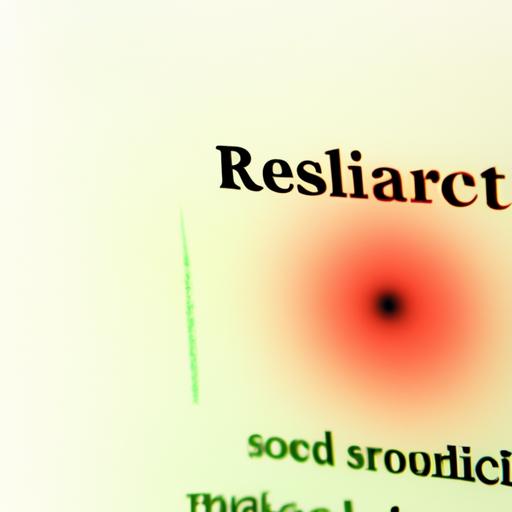What is Abstract in a Research Paper? – A Complete Guide
Table of Contents
Introduction

Abstracts are a crucial aspect of research papers. They provide a summary of the essential information contained within the paper, allowing readers to quickly determine if the paper is relevant to their interests. However, writing an abstract can be challenging, especially if you are not familiar with the process. In this article, we will provide a comprehensive guide on what abstracts are, their characteristics, types, components, and tips for writing them effectively.
Characteristics of an Abstract
Abstracts have specific characteristics that distinguish them from other sections of a research paper. One of the most crucial characteristics is the length. Abstracts should be concise and brief, usually between 150 to 250 words, depending on the journal’s requirements.
Abstracts should also contain specific content that summarizes the paper’s essential information. This includes the purpose of the study, methods used, results obtained, and conclusions drawn. Abstracts should also be written in a specific style, using clear and concise language that avoids technical jargon and acronyms.
In addition to these characteristics, abstracts should also be structured in a way that is easy to read and understand. They should be well-organized and use headings and subheadings to help guide the reader through the content.
Types of Abstracts
There are two main types of abstracts: descriptive and informative abstracts. Descriptive abstracts provide a summary of the paper’s essential information without including any specific results, conclusions, or recommendations. They are commonly used in humanities and social sciences research papers.
Informative abstracts, on the other hand, provide a summary of the paper’s essential information, including specific results, conclusions, and recommendations. They are commonly used in scientific research papers.
The type of abstract used will depend on the requirements of the journal or conference where the paper will be presented. It is essential to understand the specific requirements before writing the abstract to ensure that it meets the journal’s guidelines.
In the next section, we will discuss the components of an abstract and how to structure it effectively.
Components of an Abstract
Coming up in the next section
Types of Abstracts
As mentioned earlier, there are two main types of abstracts: descriptive and informative abstracts.
Descriptive Abstracts
Descriptive abstracts provide a brief summary of the paper’s essential information without including specific results, conclusions, or recommendations. They are commonly used in humanities and social sciences research papers.
A descriptive abstract should provide a clear understanding of the paper’s purpose, the research questions, and the methodology used in the research. It should also give an overview of the paper’s scope and provide a general idea of the paper’s conclusions.
Informative Abstracts
Informative abstracts provide a summary of the paper’s essential information, including specific results, conclusions, and recommendations. They are commonly used in scientific research papers.
An informative abstract should provide a clear understanding of the paper’s purpose, research questions, methodology, results, and conclusions. It should also provide a brief discussion of the implications of the research and its potential impact on the field.
When writing an abstract, it is essential to understand the specific requirements of the journal or conference where the paper will be presented. This will help you determine which type of abstract is appropriate for your paper.
Components of an Abstract
An abstract should contain specific components that provide a summary of the paper’s essential information. These components include:
Purpose of the Study
The purpose of the study should be clearly stated in the abstract. This should include a brief description of the research problem, the research questions, and the objectives of the study.
Methods Used
The methods used in the research should be summarized in the abstract. This should include a brief description of the research design, the sample size, the data collection procedures, and the data analysis methods.
Results Obtained
The results obtained from the research should be summarized in the abstract. This should include a brief description of the key findings and any significant results.
Conclusions Drawn
The conclusions drawn from the research should be summarized in the abstract. This should include a brief discussion of the implications of the research, any limitations of the study, and suggestions for future research.
In the next section, we will discuss tips for writing an effective abstract.
Components of an Abstract
An abstract should contain several components that provide a summary of the paper’s essential information. These components include the purpose of the study, methods used, results obtained, and conclusions drawn. It is essential to ensure that these components are well-organized, easy to read, and highlight the most important information contained within the paper.
To write an effective abstract, it is necessary to use clear and concise language that avoids technical jargon and acronyms. This ensures that the abstract is accessible to a broad audience and can be easily understood by readers who may not have a deep understanding of the topic.
Another essential tip for writing an effective abstract is to highlight the most important information. This includes the purpose of the study, methods used, results obtained, and conclusions drawn. By highlighting this information, readers can quickly determine if the paper is relevant to their interests and if they should read the full paper.
Conclusion
In conclusion, abstracts are a crucial aspect of research papers. They provide a summary of the essential information contained within the paper, allowing readers to quickly determine if the paper is relevant to their interests. Writing an effective abstract requires clear and concise language, avoiding technical jargon and acronyms, and highlighting the most important information.
By following the tips provided in this article, researchers can write effective abstracts that can help increase the visibility and impact of their research. Remember to always check the journal or conference guidelines for specific requirements and to ensure that the abstract meets those guidelines. With a well-written abstract, researchers can increase the chances of their work being read and cited by others in the field.

